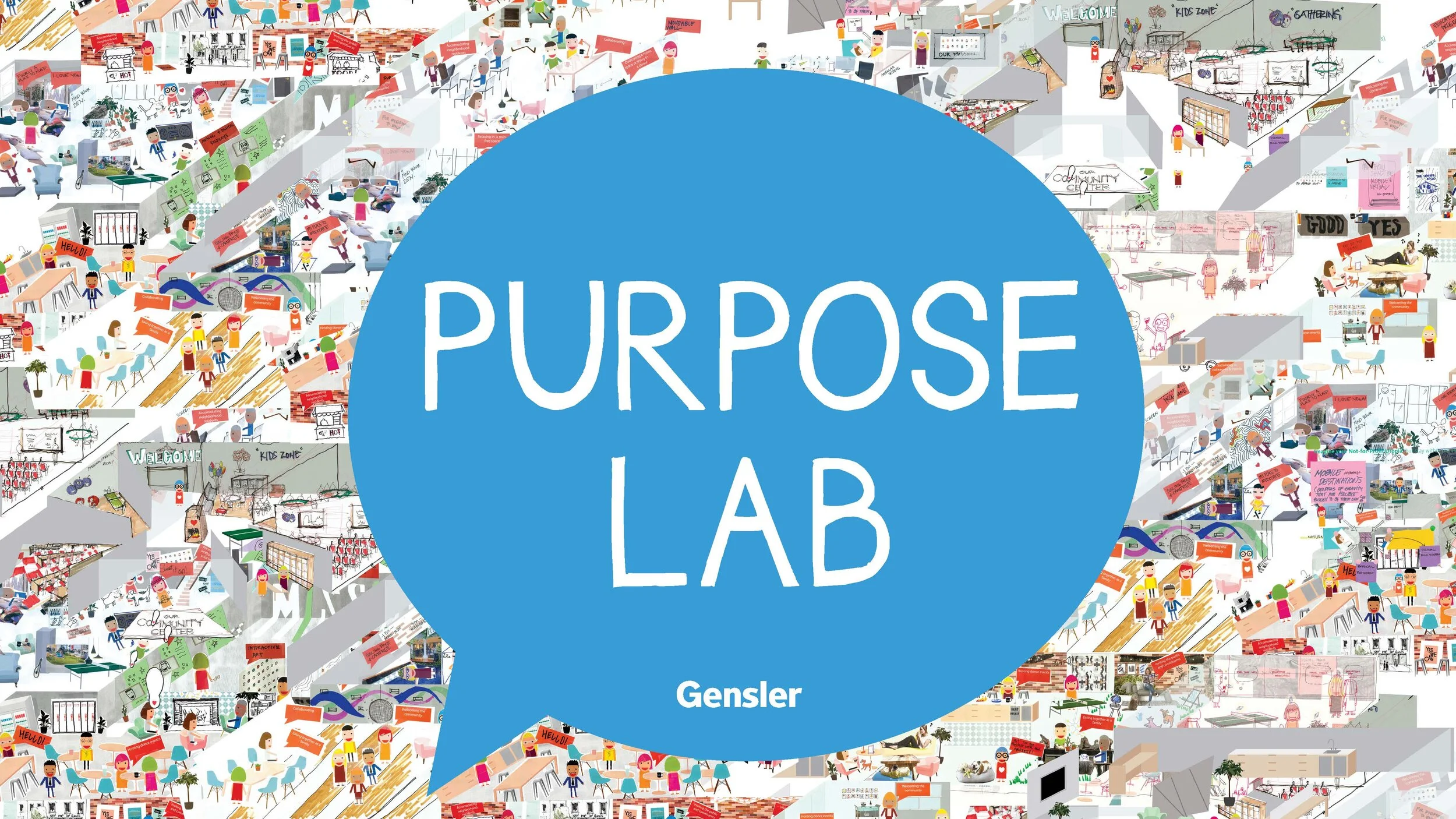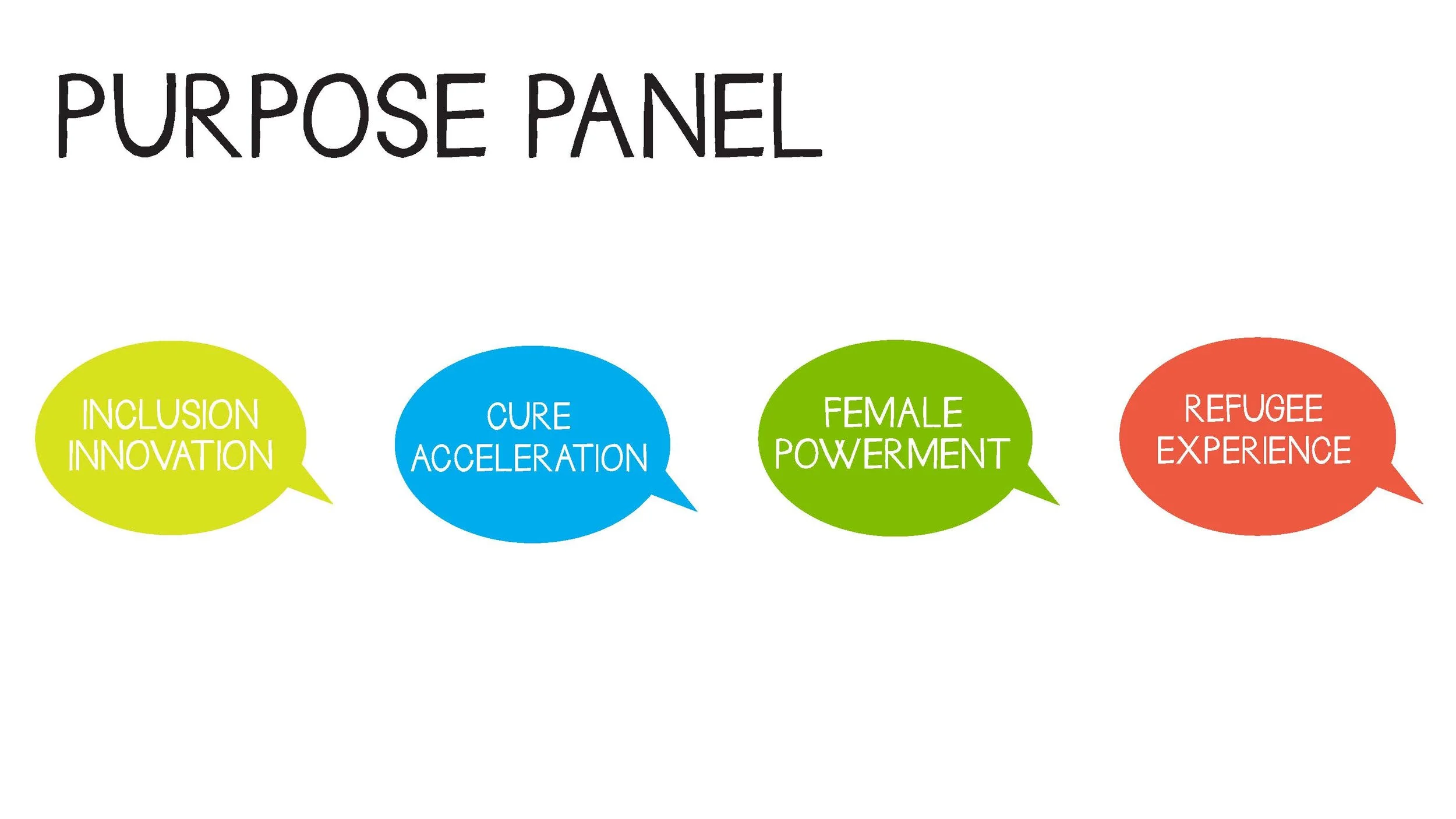
Envisioning a Purpose Utopia through Conversation and Co-creation
Not-for-Profit Utopia + Purpose Lab
Challenge
Create a conversation with Not-for-Profit Leaders and designers around how to enable purpose and meaning for employees through workplace experiences and environments
Outcome
A Not-for-Profit Utopia design and Purpose Lab event
Opportunity
How might Not-for-Profits create an environment that enables meaning and purpose for their employees?
Role
Synthesized initial research and translated to space types, facilitated a hackathon across various cities, designed and implemented the experience of Purpose Lab. This was work done while at Gensler with the Innovation team and client.
1. Research
What can we learn from not-for-profit employees about why purpose matters most?
We leveraged research findings from the Gensler Research Institute based on their studies of the drivers shaping the not-for-profit workforce and the engagement, purpose, and motivation that differentiates them. Their research explored the “why” of not-for-profit work, and specifically the impact of intrinsic motivation and meaning on employee performance and experience. Most importantly, in a sector taking on some of the most daunting challenges facing society today, intrinsic motivation is a key driver of innovation.
Despite being the third largest industry in the American workforce in terms of employment, the not-for-profit world suffers from tattered facilities, poor workplace design, and generally subpar infrastructure. Many blame it on the “Overhead Myth” — the misconception in the world of philanthropy and among the general public that donations should go directly to programming costs, rather than to an organization’s operating costs, or overhead. As a result, many organizations are judged by the metric of how much of their budget they spend on their overhead – the lower the better. It’s very common to see donated furniture, secondhand computer equipment, dark or unsuitable spaces, and other office hacks in many a not-for-profit office space.
Under these conditions, is it any surprise that some not-for-profits suffer from high turnover rates and lower salaries among their employees? One could be forgiven for assuming that people and talent are not a priority in the not-for-profit world, despite the fact that people are often the difference makers for these organizations.
Key findings:
Meaning comes from within, and is a key component of motivation and performance
Employers can facilitate intrinsic motivation if they reimagine themselves not as enforcers of productivity, but enablers of meaning
Not-for-Profit employees are four times more likely to be motivated by mission than the average employee in another sector
A well-designed workplace can be a powerful tool to foster intrinsic motivation, reduce turnover and enable a engaged, healthier, collaborative, self-directed, resilient, enthusiastic, and loyal workforce
2. Developing Space Zones
Our passion for supporting the not-for-profit employee led us to embark on a thought experiment: What would a utopia look like if it were designed for the not-for-profit employee and their individual sense of purpose? What if resources, rules, and reality itself had no constraints in the design of this utopia?
Based on our research and experience from other Practice Area Leaders, we developed 13 Not-for-Profit Space Zones:
“Welcome to our mission”A Gallery: A place where not-for-profits can not only welcome people into their space, but also use it as a chance to express their purpose.
“Bring the community in” An Interior campfire/fireplace: A place for community members, constituents, and donors alike to drop in and feel like a part of the organization. It serves as a reminder of what really counts at the end of the day.
“Be kind and unwind” An Amenity Hub: A place filled with amenities to “give back” to hard-working and dedicated employees doing often difficult and personally challenging work.
“Multi-Multi-Multi” A Meeting Room: A place where staff get together, board meetings, fundraising collating, community meet-ups. You name it, it can flexibly happen here!
“It’s all about the work”A Workplace Neighborhood: A place designed for each employee to express his or her individuality and personal mission.
“It’s all about the cowork”CoWorkplace Neighborhood: A place where not-for-profits can co-exist in the same space, share resources, energy, inspiration and strengthen the Not-for-Profit community.
“You deserve it” A Dining Room: A place filled with amenities to “give back” to hard-working and dedicated employees doing often difficult and personally challenging work.
“Donor sandbox” A Client Lounge: A place dedicated to thank donors beyond a donor wall and become a way to be involved, contribute to more than funding.
“Center of Gravity” A Garage: A mobile place where outreach and inreach meet in a more public venue where anything for the broader good can happen.
“Out of the box” A Parking Lot: A place to park deployable mobile units and host other mobile units.
“Team Canteen”A Cafe: A place for socializing, team meetings, hosting events and family dinners. It makes the space feel more like home.
“All for one, one for all” A Backyard: A place for socializing, team meetings, hosting events, family dinners that brings the space out into the community. It makes the space feel more like a part of the community.
“Swag stash” A Showcase: A place where all the not-for-profit collateral and goodies can not only be stored, but can also be on display as a clever way of expressing the mission.
3. Designing a Hackathon Experience
Hackathon with Designers
Thirteen design teams across 7 cities participated in the Hackathon to design and explore the initial 13 Not-for-Profit Space Zones created from the synthesis of initial research and experience from Not-for-Profit Practice Area Gensler practitioners.
Design Jam
Over a 2 hour period, each team is challenged to design a modular space zone with a Starter Toolkit of a blank axon, furniture, objects, people and purpose activities. Teams physically collaged these elements during the Design Jam.
Share Out
Design teams shared and reviewed their designs for feedback from external judges in a Shark Tank Pitch style event.
Format
Teams from across different cities are connected through a webcamera live view.
Team Roles
1 FACILITATOR to run the team and keep on track
Must be a diligent time-manager and leader1-2 ARTISTS to draw output and details
Must be a creative director and Illustrator ninja1 PLANNER to lay out and plan space
Must be a Lego maniac and strategist1 POET to strategize and write story
Must be a writer and big idea-haver
4. Designing a Utopia
After the share-out, teams incorporated feedback into their next iteration. We took the final sketches and synthesized into key components and worked with a graphic designer to translate into an initial Utopia.

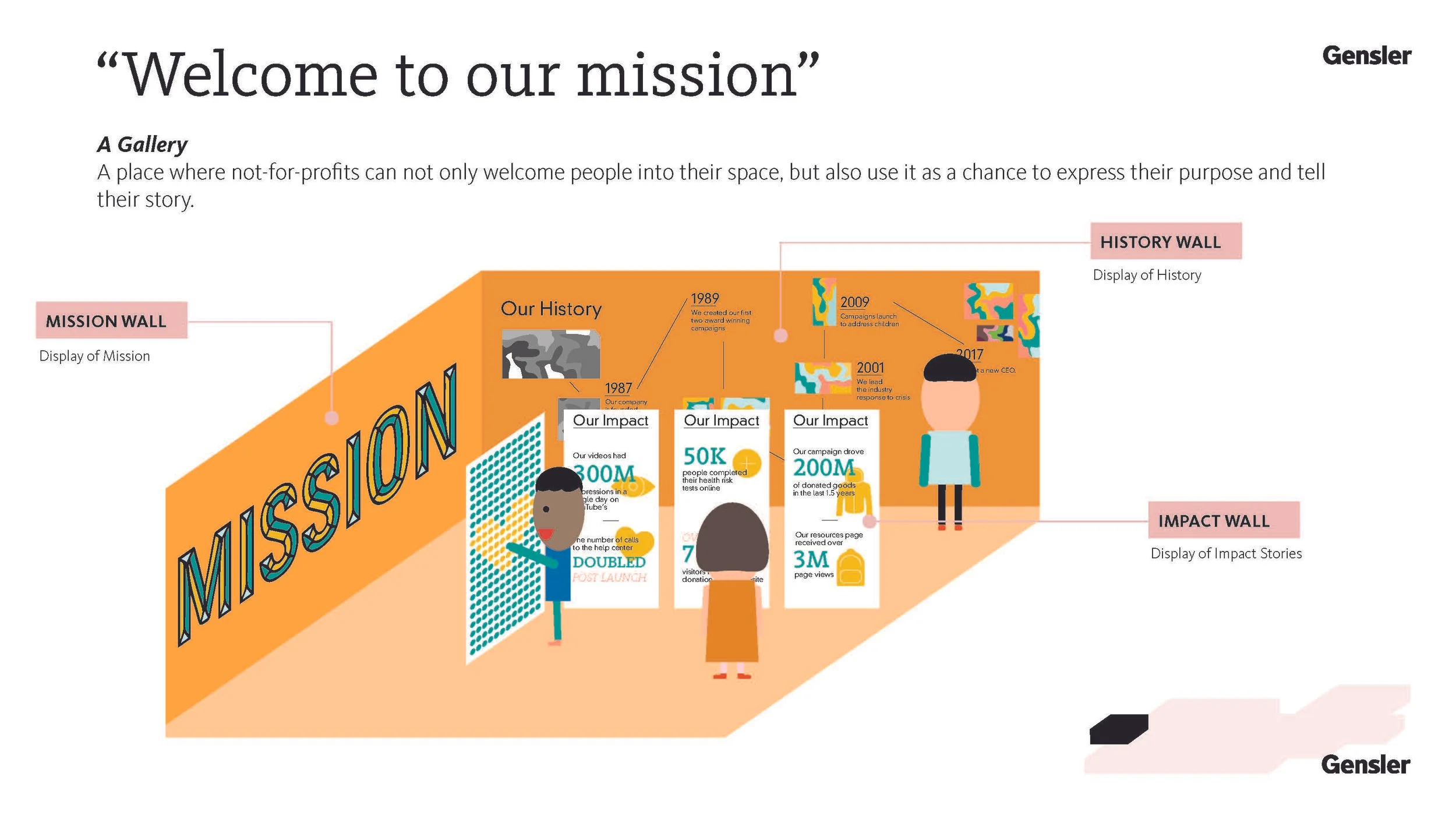

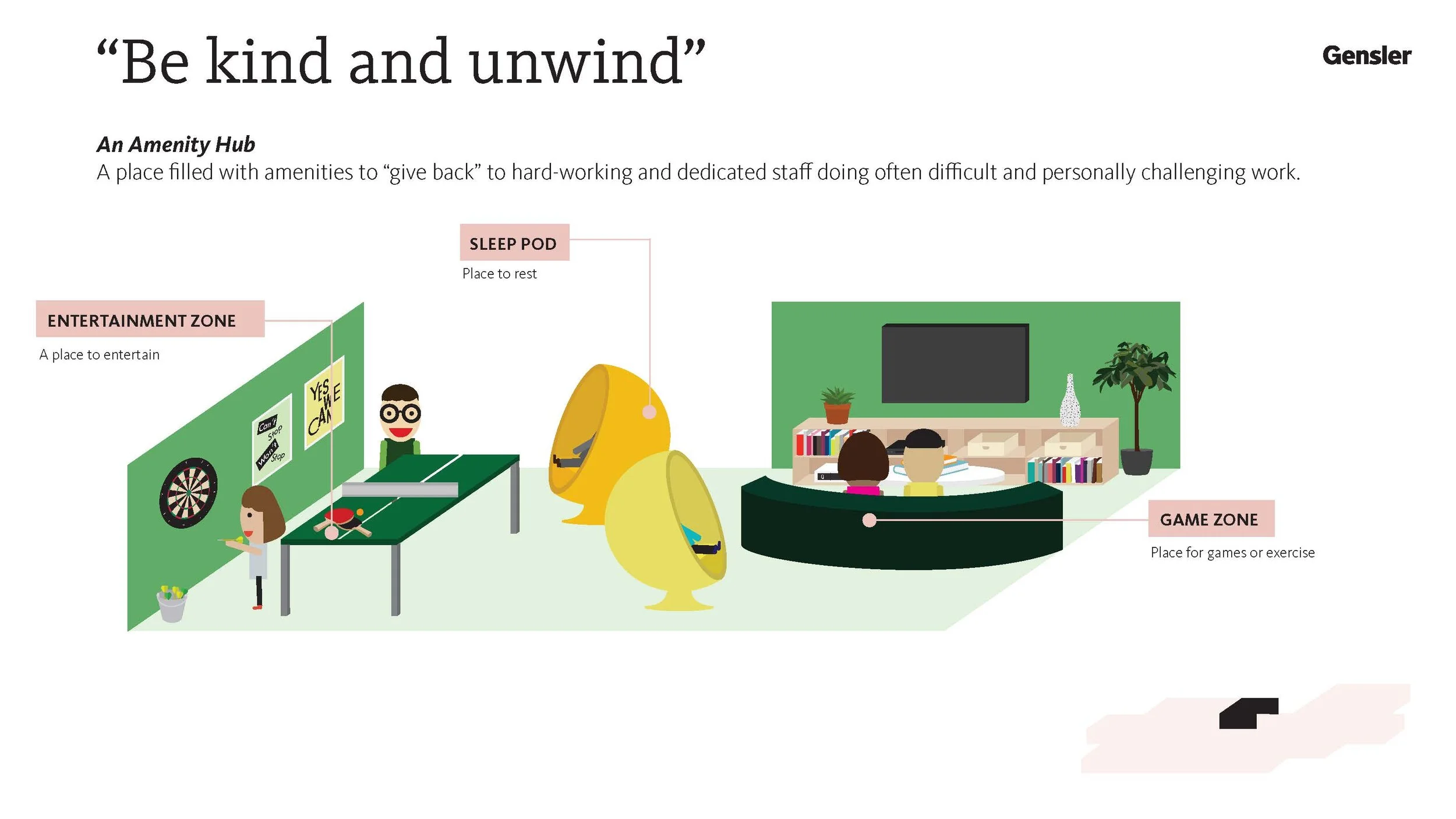

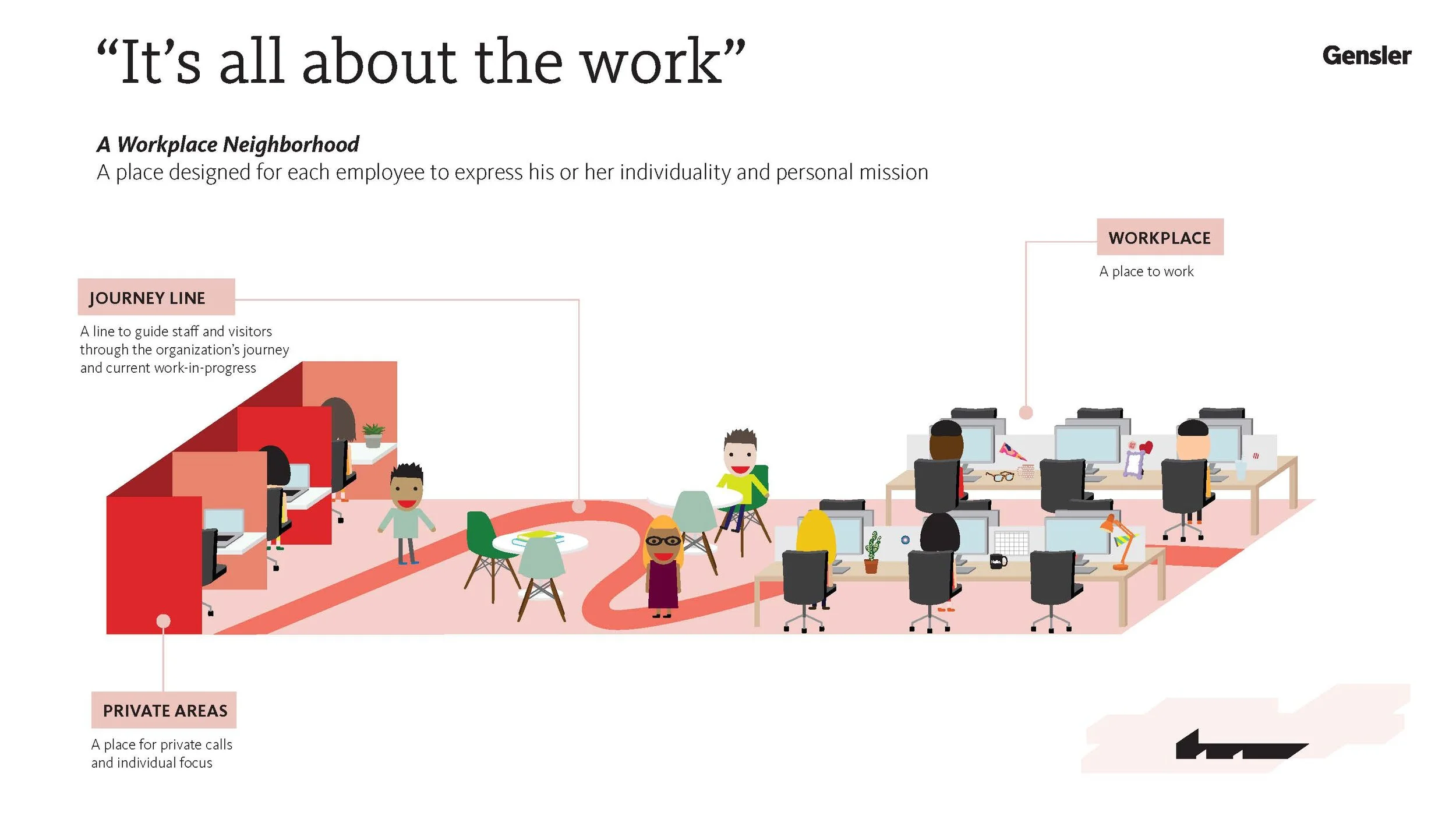







5. Testing the Utopia and Designing a Conversation around Purpose
Purpose Lab, an inclusive purpose-driven design laboratory among an incredible group of Not-for-Profit leaders and organizations
To share the Not-for-Profit Utopia for feedback, and create a conversation on how Not-for-Profit organizations walk the talk in their organizations and workplaces, we invited the CEO of Girlscouts, Executive Director of Women’s Refugee Commission, President of JDRF, and President of Ad Council to share transformative stories of impact and experiments in radical new ways of working through the lens of Inclusion Innovation, Cure Acceleration, Female Empowerment and Refugee Experience.
We aimed to understand:
How are Not-For-Profits pivoting in their approach to advocacy?
Why must they engage intrinsically motivated employees to realize this vision?
What are leaders doing to make it happen everyday?

